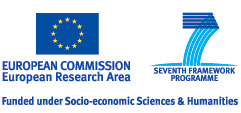Museum 2011 International Conference
Building Identity: The Making of National Museums and Identity Politics
National Museum of History, Taipei, Taiwan
16-18 November 2011
More songs about buildings and food* objects:
European national museums and the politics of identity
Professor Simon Knell
National and transnational identities have been in active construction in European national museums for more than two centuries. Rarely, however, have these identities been presented as causal narratives arising from national history and culture. These museums have instead preferred to instrumentalise material culture and architecture to construct particular performances which imbue the visitor with implicitly understood – rather than rationally articulated – beliefs and values. In doing so each nation has deployed the national museum not as a readymade technology but as a malleable medium that can crafted to local needs. The identities constructed in this way are presented as a material art that plays upon our receptivity rather than our rationality. In Europe today, these performances have a rich political dimension. In Paris, for example, there is a long history of direct political intervention in the deployment of museum architecture and objects which has sought to maintain that city’s position as a world capital of culture. Here these materialisations show not only the nation’s extraordinary cultural wealth but also an awareness of a changing ethics of possession and representation. At the British Museum in London, this ethical dimension is rather different, perhaps even post-national. In Oslo, where a new national museum infrastructure is in development, there is great public debate about whether politicians should be in control of constructing Norwegian identities. In Holland, similar political attempts to define Dutchness in a new national museum failed. In Romania, the museum professional gives radical voice to expressions of the nation’s indigenous and international identities. In Hungary, national identity seems assured; it has been rehearsed in the national museums there for more than a century, and might be essentialised into a small number of defining and uniting attributes.
The work of the Eunamus consortium aims to understand these different performances and consider whether national museums can play a more effective role in developing transnational identities and greater international social cohesion.
*Please note that the word 'food' should be crossed through. The title refers to a musical record of many years ago called 'More Songs About Buildings And Food' by the American band Talking Heads.
Link to conference website


